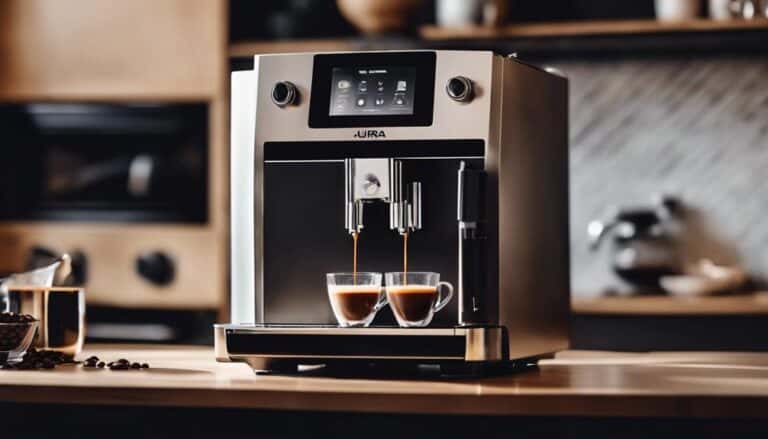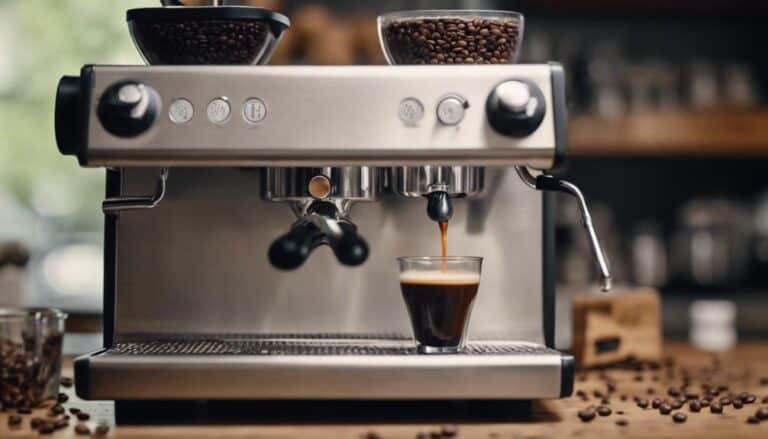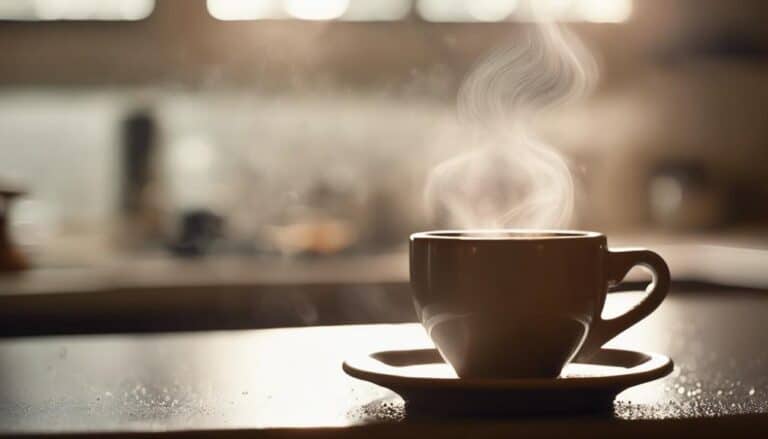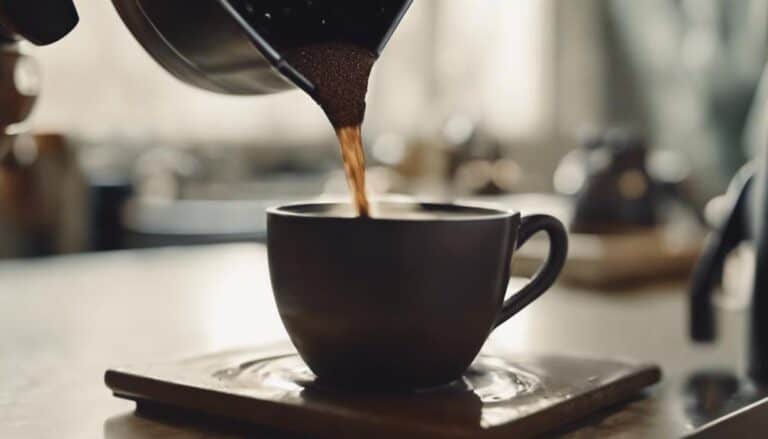Brewing the Most Caffeine-Rich Coffee

When it comes to crafting the most caffeine-rich cup of coffee, there are various factors to take into account that go beyond just the type of beans used. From the grind size to the brewing method, each step in the process plays a pivotal role in extracting the maximum caffeine potential. By exploring the nuances of caffeine extraction through different techniques and approaches, one can truly elevate their coffee experience to new heights.
Espresso Machine Vs. Espresso Pods
When it comes to choosing between an espresso machine and espresso pods, the decision ultimately boils down to your preference for control and convenience in crafting the perfect cup of espresso.
Espresso machines offer the freedom to customize every aspect of your espresso, from the grind size to the water temperature and extraction time. This level of control allows you to tailor your espresso to suit your exact preferences, ensuring a unique and personalized cup every time.
On the other hand, espresso pods provide a quick and effortless way to enjoy a consistent dose of espresso without the need for grinding or measuring. The convenience of espresso pods can be a time-saver for those who are always on the go or prefer a hassle-free brewing experience.
While espresso machines excel in versatility, allowing you to explore a variety of espresso-based drinks like lattes and cappuccinos, espresso pods are straightforward and perfect for those seeking simplicity in their daily coffee routine.
Ultimately, the choice between espresso machines and espresso pods depends on your priorities when it comes to crafting your daily espresso fix.
Cold Brew Concentration
As we shift our focus to Cold Brew Concentration, the allure of its potent caffeine content beckons to those seeking a robust coffee experience. Cold brew, with its rich and intense flavor profile, is a favorite among caffeine enthusiasts for good reason. Here's why cold brew concentration stands out:
- High Caffeine Concentration: Cold brew boasts an impressive 2,240 mg/l of caffeine, making it a powerhouse for those who crave a strong kick to start their day.
- Efficient Extraction: The slow brewing process of cold brew effectively extracts caffeine, resulting in a concentrated elixir that packs a punch with every sip.
- Potent Caffeine Boost: When you need a jolt of energy, cold brew delivers a potent caffeine boost that keeps you alert and focused.
- Smooth Flavorful Coffee: Despite its high caffeine content, cold brew offers a smooth and flavorful coffee experience that lingers on the palate, making each sip a delight.
Embrace the cold brew experience for a caffeine kick like no other.
Caffeine Content Comparison
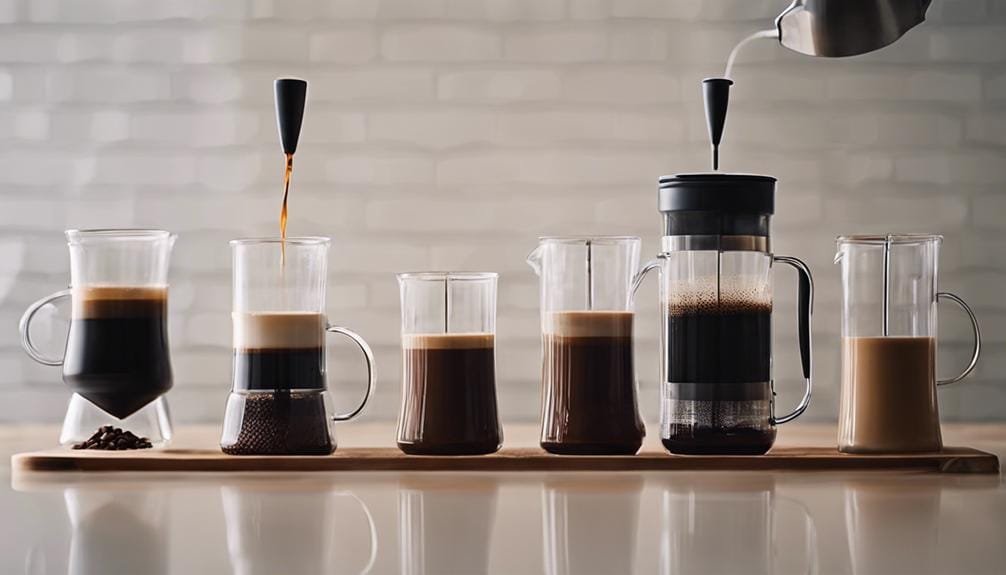
When considering caffeine content in coffee, the type of beans used plays a pivotal role in the final brew's potency. Different brewing methods also impact caffeine levels, with espresso and cold brew standing out for their concentrated doses.
To enjoy a high-caffeine cup, opt for blends known for their robust caffeine content and pick a brewing method that maximizes extraction efficiency.
Caffeine Levels in Beans
In exploring the caffeine levels in beans, it becomes evident that different brewing methods result in varying concentrations of this stimulating compound. Here is a breakdown of the caffeine content comparison:
- Espresso: 4,200 mg/l
- Cold brew coffee: 2,240 mg/l
- Stovetop brewing method: 2,192 mg/l
- French press coffee: 742 mg/l
Understanding the caffeine levels in coffee beans is essential for those seeking a potent kick to start their day. Whether you prefer the intense jolt of an espresso or the smooth richness of a French press brew, knowing the caffeine content in different brewing methods allows for a personalized coffee experience tailored to your caffeine needs.
Brewing Methods Impact
Exploring the impact of different brewing methods on caffeine content reveals intriguing insights into the stimulating power of coffee. Among the methods studied, espresso stands out with a high caffeine concentration of 4,200 mg/l, closely followed by cold brew at 2,240 mg/l, and stovetop brewing at 2,192 mg/l.
Moving down the scale, the French press method yields 742 mg/l of caffeine per serve, while pour over results in 692 mg/l. These numbers highlight the significant variations in caffeine content depending on the brewing technique employed.
Understanding how the brewing method influences caffeine levels allows coffee enthusiasts to tailor their brewing process to their desired level of stimulation, ensuring a personalized and fulfilling coffee experience.
Choosing High-Caffeine Blends
For those seeking a potent caffeine kick, understanding the caffeine content of different brewing methods is essential in selecting high-caffeine blends. When it comes to high caffeine coffee, here's a breakdown of the amount of caffeine per 1 liter for some popular brewing methods:
- Espresso: 4,200 mg – A powerhouse with the highest caffeine concentration.
- Cold Brew Coffee: 2,240 mg – Strong and perfect for a robust energy boost.
- Stovetop Coffee: 2,192 mg – Ideal for those craving a powerful caffeine punch.
- French Press Coffee: 742 mg – Moderately strong caffeine content, providing a satisfying kick.
Knowing these caffeine concentrations can help you choose the perfect high-caffeine blend to suit your needs and keep you energized throughout the day.
Extracting Maximum Caffeine
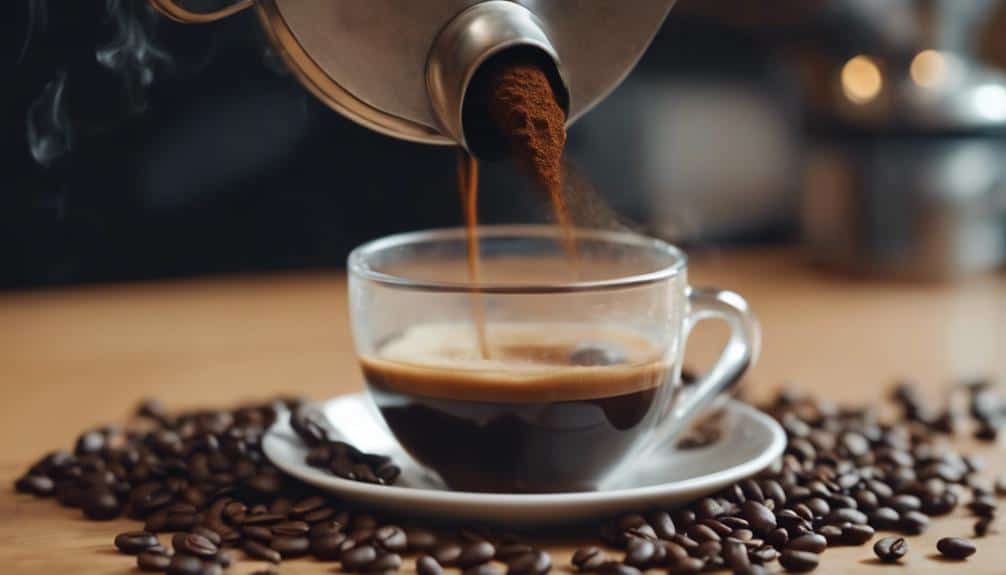
To extract the maximum caffeine from your coffee, choose lighter beans in a light roast for a higher caffeine content due to less roasting. Opting for finely ground beans can further enhance caffeine extraction, ensuring a fresher and more invigorating cup of coffee.
Understanding the essential coffee to water ratio is vital in maximizing caffeine intake. By brewing with the right ratios, you can boost the energy-boosting properties of your coffee. Keep in mind that brewing smaller cup sizes can concentrate caffeine, while larger sizes may dilute it.
For a quick and potent caffeine kick, consider adding espresso to your regular coffee; this combination significantly boosts the caffeine content for a rapid energy surge. By being mindful of these factors and techniques, you can craft a coffee experience that isn't only rich in caffeine but also tailored to your desired level of stimulation.
Brewing Techniques for Caffeine
When it comes to brewing coffee for maximum caffeine intake, understanding the techniques is essential.
Grind size plays a significant role in caffeine extraction, as finer grounds expose more surface area for efficient brewing.
The brewing time also impacts the caffeine content, so getting the right balance is key to a potent cup of coffee.
Extraction for Maximum Caffeine
In my pursuit of the most caffeine-rich coffee, I explore the intricate art of maximizing caffeine extraction through precise brewing techniques. To achieve this, I focus on the grind size, brewing ratios, cup sizes, and pouring techniques:
- Opt for finely ground light roast beans from the University of Newcastle for increased caffeine extraction.
- Mastering the right brewing ratios can intensify the caffeine content in your cup.
- Smaller cup sizes concentrate caffeine, preventing dilution and enhancing potency.
- Pouring the initial cup from a large pot captures the highest caffeine concentration.
Grind Size Importance
Delving into the world of coffee brewing for maximum caffeine potency, finely grinding the beans emerges as a pivotal step in revealing the full potential of your brew.
The grind size of your coffee beans greatly impacts the caffeine extraction process, with finer grounds leading to increased caffeine content in your cup. Opting for a medium-fine grind size is ideal to achieve a potent and energy-boosting coffee experience.
By using finely ground beans, you guarantee a more intense flavor profile and higher caffeine potency in your final brew. The smaller the grind size, the more surface area is exposed, allowing for a thorough extraction of caffeine during brewing.
Embracing the art of finely ground coffee opens up a world of rich, bold, and invigorating coffee possibilities.
Brewing Time Impact
Exploring the impact of brewing time on caffeine extraction reveals an essential element in maximizing the potency of your coffee brew. When it comes to brewing methods and caffeine intensity, the length of time you steep your coffee grounds can greatly affect the final outcome.
- Longer brewing times extract more caffeine from the grounds.
- Extended brewing periods lead to higher caffeine content in the brew.
- Best brewing time varies depending on the brewing method and personal preference.
- Adjusting brewing time allows you to control the caffeine intensity of your coffee, providing a stronger kick when needed.
Optimal Caffeine Extraction
With a keen focus on extracting the maximum caffeine content from your coffee, one must understand the critical factors that influence this process. To start, opt for lighter roast beans as they contain more caffeine due to less roasting, making them perfect for those seeking higher caffeine intake in their cup.
Additionally, finely ground beans play an essential role in maximizing caffeine extraction, resulting in a fresher and more energy-boosting brew. Understanding the right brewing ratios is vital; it helps make sure that you extract the most caffeine possible from your coffee grounds.
Furthermore, choosing smaller cup sizes can lead to a more concentrated caffeine intake, preventing dilution and enhancing the energy boost you seek. For an extra jolt, consider adding espresso to your regular coffee; this boosts the caffeine content significantly, providing a quick and powerful energy kick.
Customizing Caffeine Intake
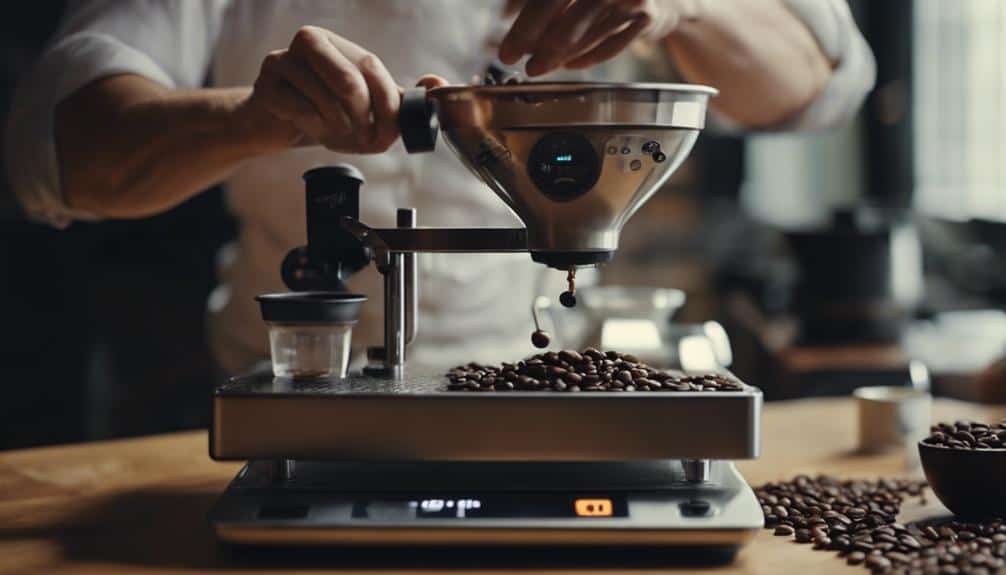
To tailor your caffeine intake to suit your needs, consider experimenting with different brewing methods and coffee types to achieve the perfect balance of energy and flavor. Here are some tips to help you customize your caffeine intake:
- Opt for light roast coffee: Light roast coffee beans generally contain more caffeine as they're roasted for a shorter period, preserving the caffeine content.
- Choose finely ground beans: Finely ground coffee beans have a larger surface area, allowing for more efficient caffeine extraction during brewing.
- Go for smaller cup sizes: Concentrating your caffeine intake in smaller cup sizes can provide a quick and a potent energy boost when needed.
- Mix in espresso: Adding a shot of espresso to your regular coffee can boost the caffeine content per serving, offering a stronger kick of energy.
Enhancing Caffeine Strength
Maximizing caffeine strength in your coffee involves strategic choices in bean grinding and brewing techniques to elevate your morning brew to new heights of potency and flavor. To achieve a robust caffeine content, opt for finely ground beans and hotter water extraction methods. The Phin brewing method is a standout choice, as it not only retains caffeine and flavor but also delivers a high-caffeine brew reminiscent of Vietnamese-style espresso. Utilizing slow drip techniques with a Phin can extract more caffeine per ounce compared to other brewing methods, ensuring a potent kick to start your day.
When brewing with a Phin, consider adding a second pour of water to increase the fluid ounces while maintaining caffeine potency. This additional step enhances the overall caffeine strength per cup, allowing you to savor both the intense flavor and the energizing effects of your coffee. By making informed decisions during the brewing process, you can enjoy a rich and invigorating cup filled with the maximum milligrams of caffeine your heart desires.
Tailoring Caffeine Preferences
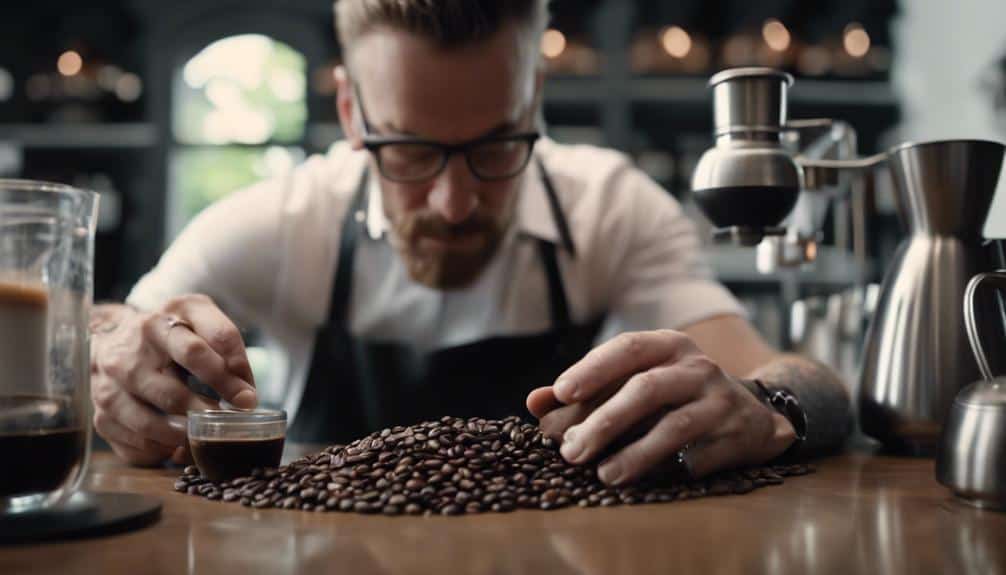
Tailoring your caffeine preferences involves understanding the nuances of bean selection and brewing techniques to craft a personalized coffee experience that perfectly suits your energy needs and flavor preferences.
- Choose lighter beans in light roast coffee for maximum caffeine intake.
- Opt for finely ground beans to enhance caffeine extraction and freshness.
- Understand brewing ratios to maximize caffeine extraction for a potent cup.
- Select smaller cup sizes for concentrated caffeine and a better energy boost.
Conclusion
After experimenting with different brewing methods and techniques, I've discovered the perfect formula for brewing the most caffeine-rich coffee. By using light roast beans, finely grinding them, and paying attention to the coffee to water ratio, I've created a potent energy-boosting brew that satisfies my caffeine cravings.
With a little creativity and dedication, anyone can tailor their caffeine preferences and enjoy a strong and flavorful cup of coffee that packs a powerful punch. Cheers to the perfect brew!
